Hệ thống lưu trữ IBM System Storage DS3512
(*) Giá chưa bao gồm thuế VAT
Product ID: DS3512 – 1746A2D
IBM System Storage DS3512 Express Dual Controller Storage System:
Includes 6 gigabits per second (Gbps) serial-attached SCSI (SAS) systems to deliver mid-range performance and scalability at entry-level prices
Offers built-in management expertise in intuitive and powerful storage management software
Delivers continuous data security with full disk encryption and supports high-performing solid state drives (SSDs)
Offers Network Equipment Building System (NEBS) and European Telecommunication Standards Institute (ETSI) compliance and support for 48 V DC power supplies
The DS3500 series combines next-generation controller technology with a 6 GB SAS interconnect to the disk drives and the latest high-performance host interface technologies, 6 Gb SAS, 10 Gb iSCSI, and 8 Gb Fibre Channel (FC).
The DS3500 is available in two models. The DS3512 Express Storage System holds up to twelve 3.5-inch SAS disk drives and the DS3524 Express Storage System holds up to twenty-four 2.5-inch (small form factor) SAS disk drives (Figure 1). EXP3512 is a 12-drive enclosure and EXP3524 is a 24-drive enclosure that can be attached to either of the storage subsystems.
Offering substantial improvements at a price that fits most budgets, the DS3500 delivers superior price-to-performance ratios, functionality, scalability and ease of use for the entry-level storage user.
Figure 1. DS3512 (top) and DS3524 (bottom) front view
Did you know?
The IBM DS3500 is ready for the move to 10 Gb iSCSI with the four ports that it has. It provides backwards compatibility with 1Gb iSCSI environments, protecting your current investment while transitioning to the network of the future. It also maintains simplicity by using a standard RJ45 connection without the need of additional SFPs.
DS3500 highlights
The DS3500 is available with single or dual controllers, with the option to further enhance the performance of your dual controller system with the Turbo Performance option. You choose the configuration to match your current performance requirements and budget, and IBM offers a way to protect your investment with an upgrade path to later add the options that you need. With its simple, efficient, and flexible approach to storage, the DS3500 is a cost-effective, fully integrated complement to IBM System x® servers, IBM BladeCenter®, and IBM Power Systems™.
The next-generation 6 Gbps SAS systems deliver midrange performance and scalability at entry-level prices.
It provides investment protection and cost-effective backup and recovery with remote mirror across Fibre Channel and compatibility with DS5000 and DS4000®.
Full disk encryption with local key management provides relentless data security.
Drive and expansion enclosure intermix cost-effectively to meet all application, rack, and energy-efficiency requirements.
DS3500 part numbers
Table 1 lists several DS3500 part numbers associated with the IBM System Storage DS3500 series models.
Table 1. DS3500 part numbers
| Part number | Description |
| 1746-A2S | IBM System Storage DS3512 Express Single Controller Storage System |
| 1746-A2D | IBM System Storage DS3512 Express Dual Controller Storage System |
| 1746-A4S | IBM System Storage DS3524 Express Single Controller Storage System |
| 1746-A4D | IBM System Storage DS3524 Express Dual Controller Storage System |
| 1746-T4D | IBM System Storage DS3524 Express DC Dual Controller Storage System |
| 1746-A2E | IBM System Storage EXP3512 Express Storage Expansion Unit |
| 1746-A4E | IBM System Storage EXP3524 Express Storage Expansion Unit |
DS3500 product overview
The DS3500 is available in two models, and each model can have either one or two controllers:
The DS3512 Express Storage System holds up to twelve 3.5-inch SAS disk drives.
The DS3524 Express Storage System holds up to twenty-four 2.5-inch SAS disk drives.
The capacity of a DS3500 system can be increased to up to 192 disk drives with the attachment of EXP3500 expansion units. It is also available in two models:
The EXP3512 Express Expansion Unit holds up to twelve 3.5-inch SAS disk drives.
The EXP3524 Express Expansion Unit holds up to twenty-four 2.5-inch SAS disk drives.
All models support dual-port, high-performance, high-capacity nearline and self-encrypting drives. Near-line SAS and SED disk drives of the same form factor can be intermixed within the appropriate DS3500 or EXP3500 enclosure. You can even intermix EXP3512 and EXP3524 expansion units behind either a DS3512 or DS3524 storage system.
DS3500 specifications
Table 2 provides a brief overview of IBM System Storage DS3500 Express models.
Table 2. DS3500 specifications
| Feature | Description |
| RAID controller | Dual active, hot-swappable controllers. |
| Cache | 1 GB cache per controller with 2 GB upgrade.
|
| Host interface | Four interface options (SAS, iSCSI/SAS, FC/SAS):
|
| Drive interface | Two 6 Gb SAS drive expansion ports. |
| Expansion enclosures | EXP3512 (2U 12 3.5-in drive) and EXP3524 (2U 24 2.5-in drives) enclosures.
|
| Maximum drives supported | Up to 192 drives: high performance SAS drives, nearline SAS drives, and SED SAS drives.
Both of the expansion enclosures can be intermixed behind a DS3500. |
| Supported systems |
For a complete list of currently supported servers, operating systems, host bus adapters, clustering applications, and SAN switches and directors, refer to System Storage Interoperation Center (SSIC). |
| RAID levels | 0, 1, 3, 5, 6, 10. |
| Storage partitions | Support for up to 128 storage partitions (levels: four standard with upgrades to 8, 16, 32, 64, 128). |
| Copy services |
|
| Performance options | Turbo and base performance options. |
| Fans and power supplies | Dual redundant, hot-swappable Power and cooling module houses power supplies, redundant cooling fans. |
| Rack support | 2U, 19-inch, industry-standard rack. |
| Management software | IBM System Storage DS® Storage Manager. |
| SAN support | Supported IBM FC switches and directors, and IP switches. |
| CRUs | All primary components are hot-swappable CRUs and can be accessed easily and removed or replaced. |
| Warranty | Three-year parts and labor warranty, 9×5 next business day. Upgradeable to 24×7 with 4-hour response. |
| Other | DC-powered models available in enclosures for twenty-four 2.5-inch drives of (DS3524 and EXP3524). |
Figure 2 shows the rear view of the DS3500 with Native SAS host ports only.
Figure 2. DS3500 rear view
Table 3 lists the physical characteristics of the IBM System Storage DS3500 models.
Table 3. DS3500 physical characteristics
| Feature | Description |
| Dimensions |
|
| Weight |
|
| Drive enclosure models |
Drive interface – 6 Gb SAS. |
| Temperature |
|
| Heat dissipation (BTU per hour) |
|
| Relative Humidity (no condensation) |
Applies to EXP3512/EXP3524 Drive Enclosure also. |
| Altitude ranges |
|
| Acoustical noise emissions | DS3512 and EXP3512 fully populated with 12 drives:
DS3524 and EXP3524 fully populated with 24 drives:
|
| Electrical input (ac models) |
|
| Electrical input (dc models) | Input voltage range:
Operating current: 15.3 A to 21.7 A. |
EXP3512 and EXP3524 enclosures
Table 4 provides an overview of the IBM System Storage EXP3512 and System Storage EXP3524 Expansion Enclosures shown in Figure 3.
Figure 3. EXP3512 and EXP3524 enclosures
Table 4. Storage expansions
| Feature | Description |
| Drive interface | 6 Gbps SAS. |
| Supported drives |
|
| Maximum drives supported |
Scalability up to 192 drives (optional mix of expansion enclosures). |
| Fans and power supplies | Dual. |
| Rack support | Yes, standard. |
| Warranty | 3-year limited warranty , CRU and on-site service, next business day 9×5, service upgrades available. |
| Size | 2U rack-optimized. |
| Environment |
|
| Heat output |
|
| Energy consumption efficiency | 80 PLUS efficiency standard. |
| Next-generation SAS expansion enclosures |
|
| Scalable up to 192 drives with a mix of EXP3512 and EXP3524 enclosures |
|
| Supports high-performance SAS, capacity-optimized SAS drives, and SEDs |
|
| Redundant and hot-swappable ESMs, power supplies, and drives |
|
| Power supplies designed to meet multiple power efficiency standards | Power efficiencies meet green initiatives and reduce overall energy expenditures. |
Options and feature codes
Table 5 lists the option numbers and the feature codes of the various cables that can be ordered with the DS3500.
Table 5. Cables
| Option number | Feature code | Description |
| 39R6529 | 3708 | 1 m SAS Cable |
| 39R6531 | 3707 | 3 m SAS Cable |
| 39M5696 | 5601 | 1 m Fiber Cable (LC-LC) |
| 39M5697 | 5605 | 5 m Fiber Cable (LC-LC) |
| 39M5698 | 5625 | 25 m Fiber Cable (LC-LC) |
Table 6 lists option numbers and the feature codes of the various upgrade options that can be ordered with the DS3500.
Table 6. Features and upgrades
| Option number | Feature code | Description |
| 68Y8436 | 4300 | 4 to 8 Partition Upgrade |
| 68Y8437 | 4301 | 4 to 16 Partition Upgrade |
| 68Y8438 | 4302 | 4 to 32 Partition Upgrade |
| 68Y8439 | 4304 | 4 to 64 Partition Upgrade |
| 68Y8440 | 4305 | 4 to 128 Partition Upgrade |
| 68Y8441 | 4310 | 8 to 16 Partition Upgrade |
| 68Y8442 | 4311 | 8 to 32 Partition Upgrade |
| 68Y8443 | 4312 | 8 to 64 Partition Upgrade |
| 68Y8444 | 4313 | 8 to 128 Partition Upgrade |
| 68Y8445 | 4320 | 16 to 32 Partition Upgrade |
| 68Y8446 | 4321 | 16 to 64 Partition Upgrade |
| 68Y8447 | 4322 | 16 to 128 Partition Upgrade |
| 68Y8448 | 4330 | 32 to 64 Partition Upgrade |
| 68Y8449 | 4331 | 32 to 128 Partition Upgrade |
| 68Y8450 | 4340 | 64 to 128 Partition Upgrade |
| 81Y9620 | 4390 | 96 to 192 Drive Expansion |
| 69Y2871 | 4400 | Turbo Performance |
| 68Y8490 | 4410 | Full Disk Encryption (FDE) |
| 68Y8451 | 4420 | FlashCopy: Base |
| 68Y8452 | 4421 | FlashCopy: Upgrade to 8 per volume/64 per system |
| 68Y8453 | 4430 | Volume Copy: Base |
| 68Y8454 | 4440 | FlashCopy Base/Volume Copy Base |
| 68Y8455 | 4450 | Remote Mirroring: Base |
| 81Y9622 | 4451 | Remote Mirroring: Upgrade |
| 68Y8458 | 4700 | AIX/VIOS Host Kit |
| 68Y8459 | 4710 | Linux on Power Host Kit |
| 68Y8461 | 4720 | HP-UX Host Kit |
| 94Y8434 | 4730 | Mac OS Host Kit |
| 69Y2909 | 6313 | United States 10A line C13 to NEMA 5-15P (2.8M) |
| 68Y8479 | 3600 | Second Controller |
| 68Y8431 | 3610 | 6 Gb SAS 2 Port Daughter Card |
| 68Y8432 | 3611 | 8 Gb FC 4 Port Daughter Card |
| 68Y8433 | 3612 | 1 Gb iSCSI 4 Port Daughter Card |
| 81Y9613 | 3613 | 10 Gb iSCSI 2 Port Card |
| 69Y2876 | 3620 | 8 Gb FC SW SFP Transceivers (Pair) |
| 68Y8434 | 3630 | 2 GB Cache Upgrade |
Table 7 lists option numbers and the feature codes of the various disk drives that can be ordered with the DS3500. The same part numbers also apply to the EXP3500 Expansion units.
Table 7. Disk drives
| Option number | Feature code | Description |
| 2.5-inch disk drives | ||
| 49Y1841 | 5205 | 146 GB 15 k rpm 6 Gb SAS |
| 49Y1836 | 5210 | 300 GB 10 k rpm 6 Gb SAS |
| 49Y1952 | 5250 | 300 GB 10 k rpm 6 Gb SAS SED |
| 49Y1851 | 5265 | 500 GB 7.2 k rpm 6 Gb NL SAS |
| 49Y2048 | 5220 | 600 GB 10 k rpm 6 Gb SAS |
| 81Y9915 | 5225 | 900 GB 10 k rpm 6 Gb NL SAS |
| 81Y9872 | 5270 | 1 TB 7.2 k rpm 6 Gb NL SAS |
| 81Y9903 | 5500 | 200 GB SAS SSD |
| 81Y9907 | 5505 | 400 GB SAS SSD |
| 3.5-inch disk drives | ||
| 49Y1856 | 5100 | 300 GB 15 k rpm SAS |
| 49Y1861 | 5105 | 450 GB 15 k rpm SAS |
| 49Y1866 | 5110 | 600 GB 15 k rpm SAS |
| 49Y1947 | 5150 | 600 GB 15 k rpm SAS SED |
| 49Y1876 | 5165 | 1 TB 7.2 k rpm NL SAS |
| 49Y1871 | 5175 | 2 TB 7.2 k rpm NL SAS |
| 81Y9886 | 5185 | 3 TB 7.2 k rpm 6 Gb NL SAS |
Ports and host connections
The DS3500 controller has several connection ports for different purposes (Figure 6). It supports three different host interface cards (HIC), also known as daughter cards, for host connections:
FC
iSCSI
SAS
Each of these is shown in the following figures.
Note: Only one type of optional interface can be added to any one DS3500 storage server. Mixing host interface cards between controllers in the same DS3500 is not supported.
Figure 4 shows the connections of a controller without a HIC installed.
Figure 4. DS3500 controller rear view
Figure 5 shows a rear view of the DS3500 with a SAS daughter card installed. Adding the SAS host interface card simply adds two more SAS 2.0 6 Gbps host ports.
Figure 5. DS3500 controller rear view with SAS daughter card
Figure 6 shows a rear view of the DS3500 with a iSCSI daughter card installed. It is essentially just the base controller with four additional RJ-45 Ethernet ports, all usable for iSCSI traffic.
Figure 6. DS3500 controller rear view with iSCSI daughter card
Figure 7 shows a rear view of the DS3500 with a FC HIC installed, which adds four FC 8 Gbps connections, which can also negotiate at 4 Gbps or 2 Gbps.
Figure 7. DS3500 controller rear view with FC daughter card
Power supplies
Each DS3500 and EXP3500 enclosure comes with two high-efficiency, removable, 585-watt power supplies (Figure 8) as standard. Each power supply has two internal fans for cooling the enclosure. The four fans pull air through the drives from front to back across the drives. The DS3500 meets the Network Equipment Building System (NEBS) and European Telecommunications Standards Institute (ETSI) Telco specification requiring very robust abilities and support for 48 V DC power supplies.
Figure 8. DS3500 power supplies/LED indicators
Fiber Channel cables and connectors
In this section, we discuss essential characteristics of fiber cables and connectors. This information can help you understand the options that you have for connecting and cabling the DS3500 Storage System.
Fiber cables are basically available in multi-mode fiber (MMF) or single-mode fiber (SMF). MMF allows light to disperse in the fiber so that it takes many paths, bouncing off the edge of the fiber repeatedly to finally get to the other end (multi-mode means multiple paths for the light). The light taking these various paths gets to the other end of the cable at slightly separate times (separate paths, separate distances, and separate times). The receiver has to determine which in-coming signals go together.
SMF is so thin (9 microns) that the light can barely “squeeze” through and it tunnels through the center of the fiber using only one path (or mode). This behavior can be explained (although not simply) through the laws of optics and physics. The result is that because there is only one path that the light takes to the receiver, there is no “dispersion confusion” at the receiver. Table 8 lists the supported distances.
Table 8. Cable type overview
| Fiber Type | Speed | Maximum distance |
| 9 micron SMF (longwave) | 1 Gbps | 10 km |
| 9 micron SMF (longwave) | 2 Gbps | 2 km |
| 50 micron MMF (shortwave) | 1 Gbps | 500 m |
| 50 micron MMF (shortwave) | 2 Gbps | 300 m |
| 50 micron MMF (shortwave) | 4 Gbps | 150 m |
| 50 micron MMF (shortwave) | 8 Gbps | 50 m |
| 62.5 micron MMF (shortwave) | 1 Gbps | 300 m |
| 62.5 micron MMF (shortwave) | 2 Gbps | 150 m |
| 62.5 micron MMF (shortwave) | 4 Gbps | 70 m |
| 62.5 micron MMF (shortwave) | 8 Gbps | 21 m |
Other feature highlights
This section highlights important features of DS3500 System Storage.
Host connectivity
IBM System Storage DS3500 enables Multi-protocol providing concurrent iSCSI/SAS or FC/SAS host connectivity. Figure 9 shows the two available options.
Figure 9. iSCSi/SAS or FC/SAS host connectivity
IBM System Storage DS Storage Manager
The IBM Storage System DS3500 uses the same IBM DS Storage manager as the DS5000 product line and the legacy DS3000 models. Through this software, it is possible to perform administrative tasks such as creating arrays, logical drives, assigning logical drives to the host servers, setting up FlashCopy and Volume Copy, capturing logs for troubleshooting, and so on. Figure 10 shows the IBM System Storage DS Storage Manager Enterprise Management window.
Figure 10. Enterprise Management GUI
Turbo Key
The Turbo Key is an optional premium feature that, when enabled, boosts the performance of a storage system across both throughput and IOP workloads, allowing you to take full advantage of DS3500 performance capabilities with bandwidth-intensive applications. The DS3500 Turbo Key offers: Scalability to midrange performance and features starting at entry-level prices
Efficiencies to help reduce annual energy expenditures and environmental footprint
Simplicity that does not sacrifice control with the perfect combination of robustness and ease of use
Figure 11 provides a comparison with and without the Turbo Key premium feature enabled.
Figure 11. Turbo Key
Storage partitions
Storage partitioning adds a high level of flexibility to the DS3500 Storage System. The DS3500 comes with four partitions by default, which can be expanded to a maximum of 128.
It enables you to connect multiple and heterogeneous host systems to the same storage server, in either stand-alone or clustered mode. The term storage partitioning is somewhat misleading because it actually represents a host or a group of hosts and the logical drives that they access. Without storage partitioning, the logical drives configured on a DS3500 Storage System can only be accessed by a single host system or by a single cluster, which can lead to inefficient use of storage server hardware unless the use of the DS3500 Storage System is dedicated to a single host (for example, SVC or v7000 attachment).
FlashCopy
FlashCopy creates a capacity-efficient, point-in-time copy of a physical volume for data protection uses, such as file restoration and backup. A FlashCopy volume is the logical equivalent of the physical volume, but is created more quickly than a physical copy and with minimal disruption to applications and production processes. Using copy-on-write technology, FlashCopy volumes preserve data in its original form even as data in the physical (source) volume is changed. FlashCopy volumes appear and function as standard storage volumes, and restoration of a FlashCopy volume is quick and easy.
FlashCopy Scheduler
With the new FlashCopy Scheduler, its now possible to schedule FlashCopy images via the user interface. This can be applied to new and existing snapshot volumes. Figure 12 and Figure 13 show the new menu item from the GUI interface.
Figure 12. Create Schedule option via GUI Interface
Figure 13. Simple and effective menu for scheduling a FlashCopy Image
Volume Copy
The Volume Copy premium feature creates a physical copy of a volume. Volume Copy is used with FlashCopy to create a physical copy of your data with minimal disruption to applications and production processes. Upon completion of the Volume Copy process, the new volume can be mapped to any host, and it functions as a standard volume. Volume Copy can also be used to redistribute data within the DS3500, moving volumes to a different disk drive technology or RAID level. Both FlashCopy and Volume Copy are performed by the DS3500 storage system, so no host server resources are used. A copy can be initiated while the source volume remains available for writes. Figure 14 shows Volume Copy in action.
Figure 14. Volume manager copying from logical drive RootBoot-Blade1 to RootBoot-Blade2
Graphical performance monitor
The graphical performance monitor provides information about storage I/O from multiple view points. This monitoring tool is very important for performance analysis of a managed storage subsystem. It allows administrator to make informed decisions about storage system adjustments, such as free space usage, locating stranded storage, and efficient provisioning. Figure 15 shows the graphical performance monitor feature in the GUI.
Figure 15. Graphical performance monitor
Full data encryption (FDE)
The SAS SED drives are required to enable disk security and can perform symmetric encryption and decryption of data at full disk speed with no impact on performance. The disk encryption hardware is used in conjunction with IBM Disk Encryption Storage Manager on the DS3500 storage subsystem. It uses asymmetric encryption to encrypt and decrypt the data key. IBM Disk Encryption Storage Manager will generate encryption and decryption keys that are used to lock each SAS SED drive.
Figure 16. DS3500 disk encryption manager using self-encrypting SAS SED drives
Remote mirroring
Remote mirroring provides storage-system-based data replication from one DS3500 system to another DS3500 system over Fibre Channel communications links. Remote Mirroring supports synchronous or asynchronous data transfers, enabling you to choose the replication method that best meets your protection, distance, or performance requirements:
Synchronous mirroring is designed to provide continuous mirroring between primary and remote volumes to help ensure absolute synchronization.
Asynchronous mirroring queues remote writes to reduce the latency, thus enabling long-distance replication while increasing local system performance. Asynchronous mirroring includes a write consistency option designed to ensure that writes to the remote system complete in the same order as the local system.
Remote mirroring also includes features such as dynamic mode switching, suspend and resume with delta resynchronization, read-only and FlashCopy/Volume Copy access to secondary volumes, and cross-mirroring.
IBM RSM for Storage
IBM Remote Support Manager for Storage (RSM for Storage) software is a no-charge software package that is installed on an IBM System x server running Novell SUSE Linux Enterprise Server 9, SUSE Linux Enterprise Server 10, Red Hat Enterprise Linux 4 Advanced Server, or Red Hat Enterprise Linux 5. It provides problem reporting and remote access for IBM Service for the IBM System Storage DS3000, DS4000, and DS5000 families.
The problem reporting utility provided by RSM for Storage automatically creates an entry in the IBM call management system for each subsystem that reports a problem. This is the equivalent of placing a voice call to IBM Service for a problem. Once in the system, problems are responded to with the priority specified by the maintenance agreement in place for the product.
Interoperability
Table 9 lists the latest operating systems supported by the IBM System Storage DS3500 with the corresponding multipath driver. We suggest checking the IBM System Storage Interoperation center (SSIC):
Table 9. Latest supported operating systems
| Operating systems | Multipath driver |
| IBM AIX 7.1 | IBM MPIO |
| Novell SUSE Linux Enterprise Server 11 SP1 | LSI RDAC |
| Red Hat Enterprise Linux 6 | Linux Device Mapper Multipath LSI RDAC |
| VMware vSphere/ESX 4.1 U1 | Vmware Native Multipathing Plugin (NMP) |
| Microsoft Windows Server 2008 SP2 | Microsoft MPIO (with LSI Device Specific module DSM) |
| HP HP-UX 11iv3 (11.31) | HP TPGS |
| IBM VIOS 2.2 with client AIX 7.1 or later | IBM MPIO |
| IBM VIOS 2.2 with client IBM i 7.1 or later | IBM MPIO |
| IBM VIOS 2.2 with client Red Hat 6 or later | IBM MPIO |
| IBM VIOS 2.2 with client SLES 11 or later | IBM MPIO |
Host bus adapters
Refer to the IBM System Storage Interoperation Center (SSIC) for compatible HBAs:
Drivers and firmware downloads
Fix Central provides fixes and updates for your system’s software, hardware, and operating system. To download fixes, drivers, and firmware for the IBM System Storage DS3500, select the corresponding fields on the following IBM website:
Figure 17. IBM Support: Fix Central
Disk attachment
This section describes the requirements and best practice guidelines for connecting EXP3500 enclosures to a DS3500 storage subsystem.
Figure 18 shows the SAS connections between a single controller DS3500 subsystem and three EXP3500 enclosures, with a single ESM installed in each EXP3500. This configuration is a fully functional configuration, but there is no redundancy on the drive-side connections.
Figure 18. Single controller attachment
Figure 19 shows how to correctly cable a dual controller DS3500 to a single EXP3500 enclosure with two ESMs installed. This configuration provides redundancy on the drive-side connections.
Figure 19. Dual controller attachment
Figure 20 shows the SAS cable connections when using the top-down/bottom-up cabling layout with the DS3500 storage subsystem at the top. This is the preferred SAS expansion cabling for when you are connecting two or more EXP3500 enclosures, up to the supported maximum of eight EXP3500 enclosures.
Figure 20. Top-down/bottom-up SAS drive-side connections
Host attachment
This section outlines the supported topologies for a DS3500 considering FC, iSCSI, and SAS connections. There are examples for both single and dual controller DS3500 storage subsystems.
General rule: Although some of the examples shown next are valid supported configurations, there are some with no redundancy of host-side connections. Always use redundant host-side connections instead.
FC direct attachment: The DS3500 storage subsystem supports both direct attached and SAN fabric attached hosts. You can attach up to four direct-connected hosts or up to 64 host servers in a switched fabric SAN infrastructure. This section describes sample configurations of direct-attached Fibre Channel host servers.
SAS connections: Host server SAS HBAs are used to connect to the DS3500 SAS ports. Each DS3500 controller can have up to four SAS host ports when you install the optional SAS host interface adapter. When the optional SAS host interface adapter is installed, the DS3500 can support up to 28 Blade Center hosts when attached to the SAS Connectivity Module for IBM Blade Center and up to four hosts in a direct attached host environment.
Topologies
The DS3500 supports multiple-host, multiple-port, and multiple-fabric (Fibre Channel or iSCSI, and SAS) configurations. That is, the DS3500 storage subsystem supports simultaneous SAS and either iSCSI or Fibre Channel host connections with the optional iSCSI or Fibre Channel host adapter installed, up to a maximum of 64 hosts. Figure 21 shows an example of this type of configuration with one SAS attachment and one iSCSI or FC host.
Figure 21. Host connections
Warranty period and warranty service
Every DS3500 is covered by the below warranty:
System (including the cache backup battery module): three years
Optional features: three years, unless specified otherwise
Optional IBM features initially installed in an IBM system carry the same warranty and warranty service support category as the system. If installed after the initial system installation, they carry the balance of the system warranty or the optional feature warranty, whichever is greater.
Customer replaceable unit (CRU) service
IBM provides replacement CRUs to you for you to install. CRU information and replacement instructions are shipped with your machine and are available from IBM upon your request.
Table 10 lists the various warranty options for different models of the DS3500 System Storage.
Table 10. Warranties
| ServicePac® | DS3512* |
EXP3512 | DS3524* |
EXP3524 | DS3524 DC Power** |
EXP3524 DC Power |
| Part number | 1746A2S 1746A2D |
1746A2E | 1746A4S 1746A4D |
1746A4E | 1746T4D | 1746T4E |
| Warranty and maintenance option | ||||||
| 3-year onsite repair 24×7 2-hour response | 88Y8187 | 88Y8213 | 88Y8200 | 88Y8226 | N/A | N/A |
| 3-year onsite repair 24×7 4-hour response | 88Y8186 | 88Y8212 | 88Y8199 | 88Y8225 | N/A | N/A |
| 3-year onsite repair 9×5 4-hour response | 88Y8185 | 88Y8211 | 88Y8198 | 88Y8224 | N/A | N/A |
| 5-year onsite repair 24×7 2-hour response | 88Y8189 | 88Y8215 | 88Y8202 | 88Y8228 | N/A | N/A |
| 5-year onsite repair 24×7 4-hour response | 88Y8188 | 88Y8214 | 88Y8201 | 88Y8227 | N/A | N/A |
| Maintenance agreement | ||||||
| 1-year onsite repair 24×7 2-hour response | 88Y8193 | 88Y8219 | 88Y8206 | 88Y8232 | N/A | N/A |
| 1-year onsite repair 24×7 4-hour response | 88Y8192 | 88Y8218 | 88Y8205 | 88Y8231 | N/A | N/A |
| 1-year onsite repair 9×5 4-hour response | 88Y8191 | 88Y8217 | 88Y8204 | 88Y8230 | N/A | N/A |
| 1-year onsite repair 9×5 next business day | 88Y8190 | 88Y8216 | 88Y8203 | 88Y8229 | N/A | N/A |
| 2-year onsite repair 24×7 2-hour response | 88Y8197 | 88Y8223 | 88Y8210 | 88Y8236 | N/A | N/A |
| 2-year onsite repair 24×7 4-hour response | 88Y8196 | 88Y8222 | 88Y8209 | 88Y8235 | N/A | N/A |
| 2-year onsite repair 9×5 4-hour response | 88Y8195 | 88Y8221 | 88Y8208 | 88Y8234 | N/A | N/A |
| 2-year onsite repair 9×5 next business day | 88Y8194 | 88Y8220 | 88Y8207 | 88Y8233 | N/A | N/A |
| Remote technical support | ||||||
| RTS for Storage Devices – Base – 1yr | 29R5810 | 29R5810 | 29R5810 | 29R5810 | 29R5810 | 29R5810 |
| RTS for Storage Devices – Base – 3yr | 41W9377 | 41W9377 | 41W9377 | 41W9377 | 41W9377 | 41W9377 |
* for both single and dual controller
**for dual controller
Thông số kỹ thuật
| Cache | 2 GB cache per controller with 4 GB upgrade (battery-backed) |
| Drive interfacee | 2x 6Gb SAS 2 Port Daughter Card |
| Host interface | Three options: Eight 6 Gbps SAS ports Eight 8 Gbps FC ports and four 6 Gbps SAS ports Eight 1 Gbps iSCSI ports and four 6 Gbps SAS ports |
| Storage | 12 bay (3.5′) Hot swap, Supports 6 Gbps SAS 3.5″ Drives:300 GB 15k rpm, 450 GB 15k rpm, 600 GB 15k rpm, 1 TB 7.2k rpm Nearline, 2 TB 7.2k rpm Nearline, 600 GB 15k rpm SED |
| RAID controller | Raid ( 0, 1, 3, 5, 6, 10) Dual Active, hot-swappable controllers |
| Maximum drives supported | Up to 96 drives—high performance SAS drives, nearline SAS drives, and SED SAS drives EXP3512 (2U 12 3.5-in drives) and EXP3524 (2U 24 2.5-in drive) enclosures, which can be intermixed behind a DS3500 enclosure |
| power supplies | Dual redundant, hot-swappable |
| Rack support | 2U, 19-inch, industry-standard rack |
| Management software | IBM System Storage DS® Storage Manager |
| SAN support | Supported IBM FC switches and directors, and IP switches |
| Part number | 1746A2S DS3512 Express Single Controller Storage System 1746A2D DS3512 Express Dual Controller Storage System 1746A4S DS3524 Express Single Controller Storage System 1746A4D DS3524 Express Dual Controller Storage System 1746T4D DS3524 Express DC Dual Controller Storage System |
||
| RAID controller | Dual active, hot-swappable controllers | ||
| Cache | 1 gigabyte (GB) cache per controller with 2 GB upgrade (battery-backed) | ||
| Host interface | Four options:
|
||
| Drive interface | Two 6 Gb SAS drive ports | ||
| Supported drives | 6 Gbps SAS 3.5 in. drives:
6 Gbps SAS 2.5 in. drives:
Solid-state SAS 2.5 in. drives*:
|
||
| RAID levels | 0, 1, 3, 5, 6, 10 | ||
| Storage partitions | Support for up to 128 storage partitions (levels: 4 standard with upgrades to 8, 16, 32, 64 and 128) | ||
| Maximum drives supported |
|
||
| Fans and power supplies | Dual redundant, hot-swappable | ||
| Rack support | 2U, 19 in., industry-standard rack | ||
| Management software | IBM System Storage DS Storage Manager | ||
| SAN support | Supported IBM Fibre Channel switches and directors, and IP switches | ||
| Warranty | Three-year parts and labor warranty, 9×5 next business day, upgradable to 24×7 with four-hour response | ||
| Physical characteristics | |||
| Dimensions | DS3512: Height: 3.39 in./86.16 mm, Width: 18.99 in./482.47 mm, Depth: 21.72 in./551.60 mm DS3524: Height: 3.47 in./88.07 mm, Width: 18.98 in./482.10 mm, Depth: 19.60 in./497.93 mm |
||
| Supported systems | For a list of currently supported servers, operating systems, host bus adapters, clustering applications and SAN switches and directors, refer to the DS3500 Express Interoperability Matrix. | ||
| Model | Model description | Interface | Model includes |
| 1746-E2A/EXP3512 1746-E4A/EXP3524 |
Drive enclosure | 6 Gb SAS | External security manager-embedded |
| Relative humidity (no condensation) | EXP3512/EXP3524 drive enclosure | ||
| Operating range | 20% to 80% | ||
| Storage range | 10% to 90% | ||
| Maximum dew point | 79°F (26°C) | ||
| Maximum gradient | 10% per hour | ||
| Altitude ranges | |||
| Operating | 100 ft. (30.5 m) below sea level to 10,000 ft. (3048 m) above sea level | ||
| Storage | 100 ft. (30.5 m) below sea level to 10,000 ft. (3048 m) above sea level | ||
| Transit | 100 ft. (30.5 m) below sea level to 40,000 ft. (12,000 m) above sea level | ||
| The tabulated power and heat dissipation values are the maximum measured operating power. | |||
| Acoustic noise | EXP3512/EXP3524 drive enclosure | ||
| Sound power | 6.5 bel | ||
| Sound pressure | 65 dBA | ||
| Power input | EXP3512/EXP3524 drive enclosure | ||
| Nominal voltage range | 90 V ac to 264 V ac | ||
| Frequency range | 50 to 60 Hz | ||
| Maximum operating current | 3.90 A at 115 V ac 2.06 A at 230 V ac |
||
Hãy là người đầu tiên nhận xét “Hệ thống lưu trữ IBM System Storage DS3512” Hủy
Bạn phải bđăng nhập để gửi đánh giá.




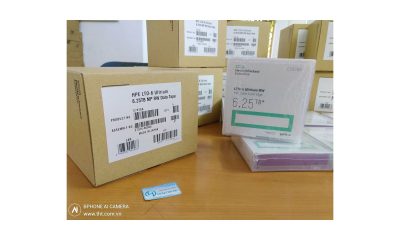
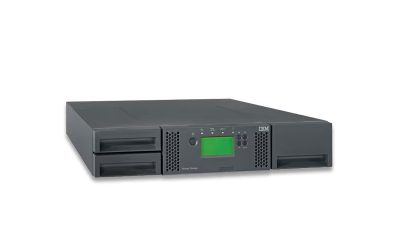
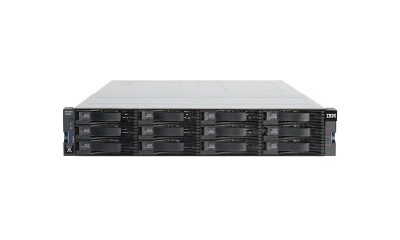
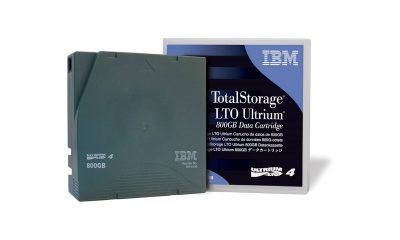
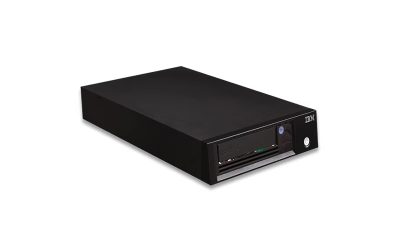
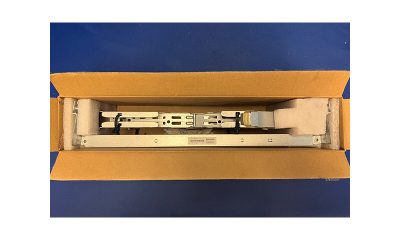
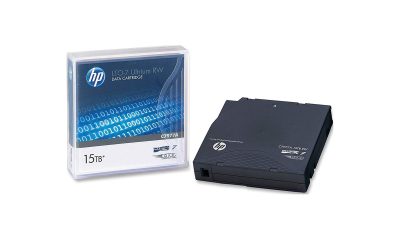
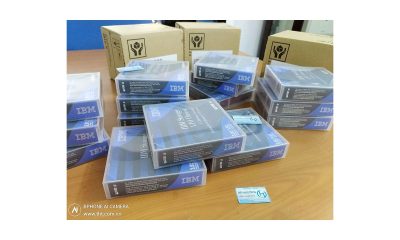




Đánh giá
Chưa có đánh giá nào.